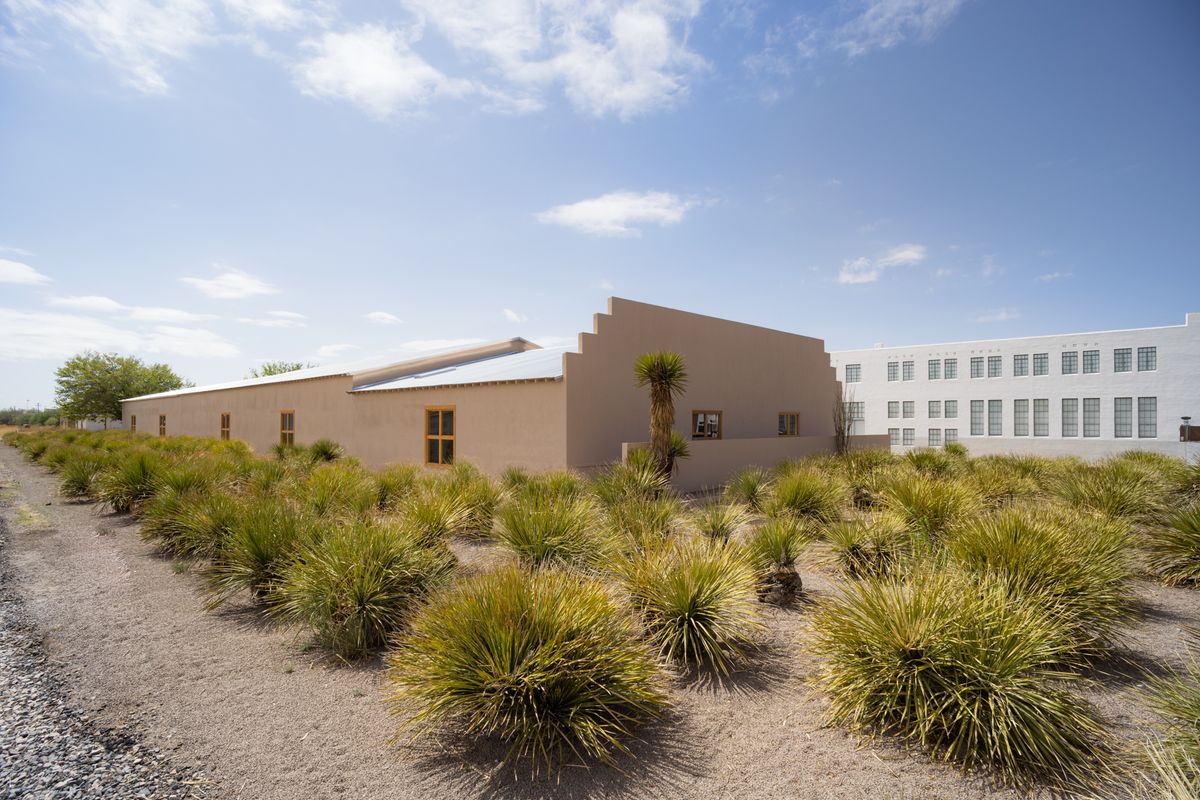The Central Marfa Historic District in Marfa, Texas—which contains 11 buildings purchased and repurposed by Donald Judd—has officially been added to the National Register of Historic Places. The listing marks the first time that Judd’s architectural interventions are receiving this kind of national recognition, and its designation will allow the Judd Foundation and the Chinati Foundation to pursue tax credits that will help offset the cost of preservation efforts.
“It means so much to the work of Donald Judd because this is the first time that his architectural interventions are part of a historic designation,” says Rainer Judd, Donald Judd’s daughter and president of the Judd Foundation.
Though far less well-known than his sculptural practice, Judd turned to his architectural work more and more later in life, and there are 11 of his buildings within the designated district now recognised by the Register of Historic Places. These include his architecture studio, which was converted from the old Marfa Bank building; his art studio, which he converted out of an old Safeway grocery store; and his ranch office, which was once a general store. For each of these converted buildings, Judd carefully reconstructed and repurposed them with a reverence and regard for their original design and function.
“I’ve carefully tried to incorporate the existing buildings into a complete complex. They are not changed, only cleaned up,” he wrote in 1985 of this undertaking. “Whatever nice but rudimentary ideas that were there, such as the clerestory, are taken to completion. It’s very important that all the structures work together, be ‘meek and bold’ among themselves. The old buildings should not drag down the new or the new denigrate the old.”
As Rainer Judd puts it, “He had a sense of waste being wrong, so he had a real sense of the value of labour. It didn’t matter if that laborer had been gone for generations, he just naturally appreciated that a bricklayer had laid those bricks, for instance.” She adds, “Even if it was just as a resource, he saw that it’s part of your role here on Earth not to throw out good stuff. And that the more you can keep from the past that’s beautifully made, that is part of cultural history, it’s part of us knowing where we came from, who was here, and what they made long before us.” The recognition that comes from such a designation will ultimately increase capacity for preservation, which is in keeping with Judd’s philosophy about the importance of permanent installations.
Judd first moved from New York City to the small West Texas town in 1971, and it was not until after his 1994 death that Marfa began to be known as the art destination that it is today.
“The bank president joked with him when he arrived into town,” says Rainer Judd. “He said he could be the second main business in Marfa; the first one was ranching but the second could be art.” The Chinati Foundation, a nonprofit museum that Judd founded in Marfa and which opened to the public in 1987, recently completed a year-long renovation and is once again home to the largest permanent installation of John Chamberlain’s work in the world.


